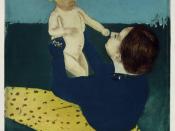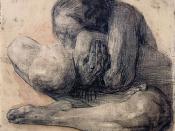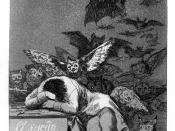Printmaking is of great significance to art. Prints differ from most other works of art in two important respects. First, they're made by, an indirect process. The artist creates the surface in which makes the work of art. Second, the printmaking results in many nearly identical images. In contrast, it is known as an art of multiples. Here a comparison of Intaglio and Lithography will be done. Using ("Mary Cassatt's" Woman Bathing, "drypoint and aquatint") and ("Kathe Kollwitz's" Death and the Mother "lithograph"), to extinguish the variant processes of the latter two.
Aquatint is a technique used to achieve tonal areas in an intaglio plate. Drypoint is a method of intaglio printmaking, in which the artist scratches directly on the metal plate with a sharp instrument such as an etching needle. When the drypoint line is scratched into the metal plate the tool creates a ragged burr on either side of the line.
This burr, as well as the incised line itself, hold a great deal of ink, and are responsible for the characteristic feathery nature of the lines. Depicted in, "Mary Cassatt's" piece, are variant color tones printed in, "aquatint" using the technique of, "drypoint". Here a woman is bathing in front of a mirror, with half of her dress on her hips exposing her flesh on her upper body.
The "lithograph" differs from 'intaglio" in that it is a planographic process, which means that printing surface is flat and not depressed. Lithography is when the artist draws on the stone or plate using a greasy medium, such as a wax crayon. The surface is then dampened with water, which is repelled by the greasy areas, sticking only to the sections of the plate that have not been drawn on. Ink is then...


